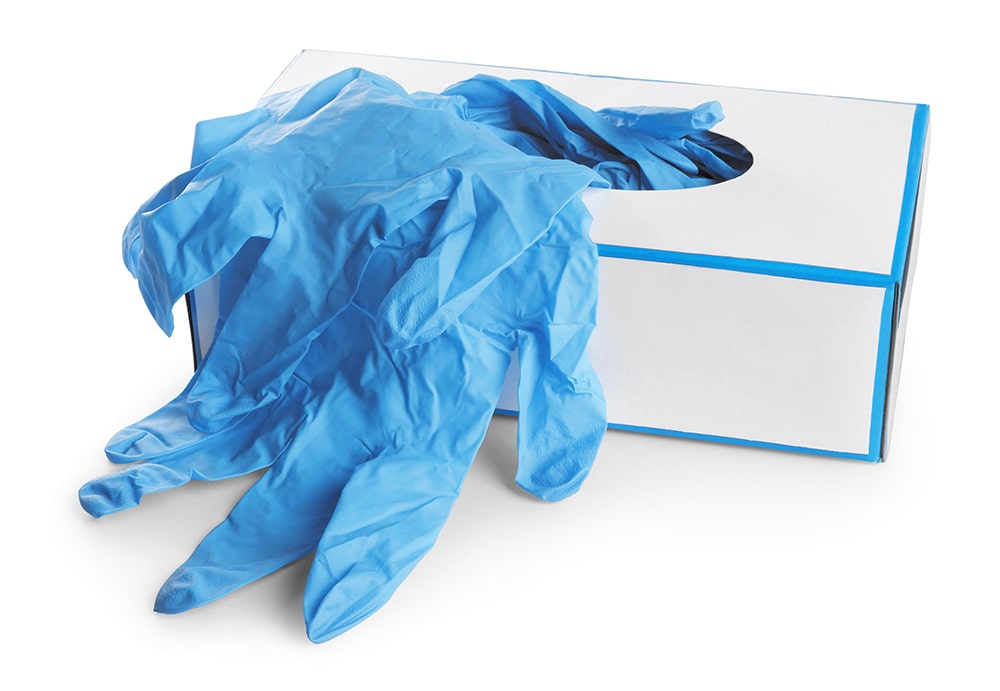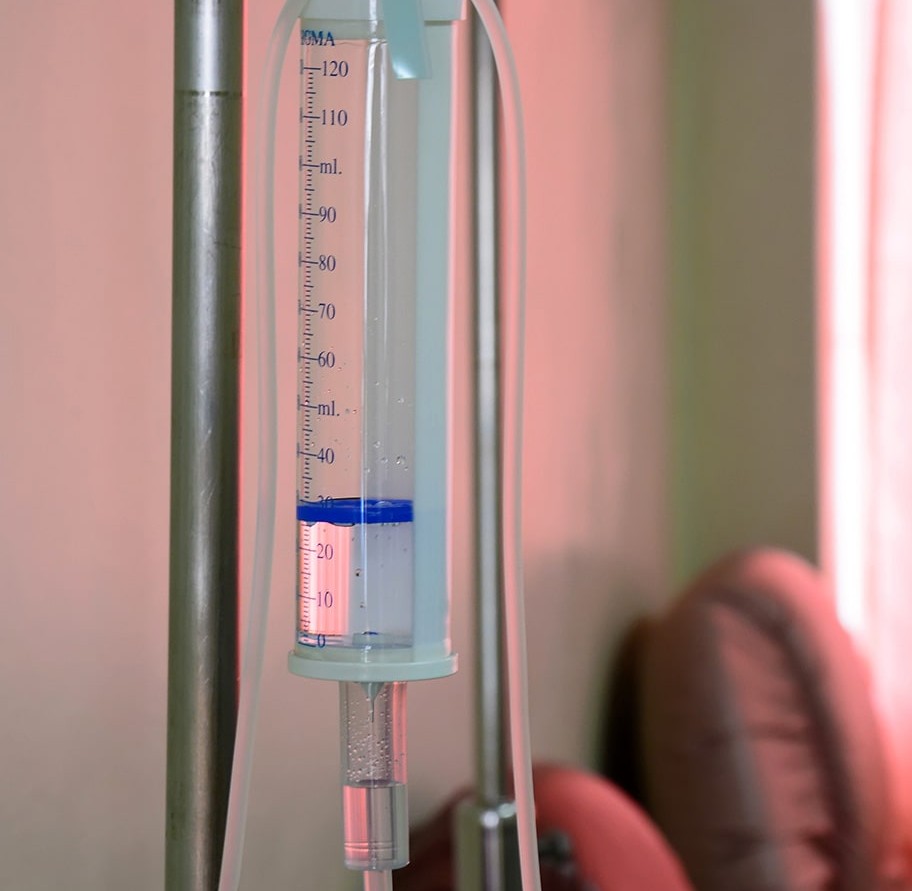
Quick Summary:
Infection prevention plays a critical role in home IV therapy. Following sterile methods, utilizing proper hygiene, changing tubing regularly, and keeping your environment organized are all necessary when shielding the insertion site from bacteria.
Caregivers need to use aseptic techniques to prevent infection and ensure safe intravenous delivery. Read this blog to learn more about how to manage IV therapy at home, as well as how to prioritize patient safety throughout treatment.
Click a link to jump to the section.
Introduction
Home IV therapy allows patients to take fluids that they can't ingest orally. Intravenous therapy delivers essential medications and nutrients directly into the bloodstream. Because of the small opening it forms on the skin, the site where the needle enters the vein is prone to infection.
Bacteria on IV equipment, such as tubing, increases the risk of infection at the site. Preventing IV infections at home is critical to patient safety. You can take certain precautions to minimize bacterial growth.
Safe home infusion care calls for careful handling of supplies. Caregivers can ensure home IV therapy hygiene by keeping their hands, equipment, and setup clean. Such preparation helps protect against bacterial growth and IV site complications.


1. Practice Proper Hand Hygiene
During IV therapy, hand hygiene is essential. Keeping your hands and station clean will significantly reduce the risk of infection.
Ensure that you’re washing hands before IV use and after handling equipment. When soap isn’t available, follow alcohol-based hand sanitizer protocol. Choose a hand rub solution that includes at least 60% alcohol.1
Caregivers must wear gloves throughout home therapy. They should be changing gloves for IV preparation and replacing them frequently to prevent cross-contamination. Appropriate hand hygiene keeps pathogens from coming in contact with IV supplies and spreading to the insertion site.
2. Clean the IV Site Regularly
IV insertion site cleaning is an essential aspect of IV home therapy. Always complete proper antiseptic prep before IV line use. Apply antiseptic wipes or solutions to disinfect the skin before insertion.
Maintaining clean dressings is central to keeping the site free from infection. Follow the manufacturer’s dressing change guidelines. The frequency of dressing changes depends partially on the type of dressing. Replace transparent semipermeable dressings every 5-7 days and gauze dressings every two days.2
Monitor the area for signs of redness, swelling, or discharge. Always replace IV dressings when signs of infection appear, regardless of the time of the last dressing change.
3. Use Sterile Technique When Changing Supplies
Avoiding contamination during line updates requires an aseptic environment. Adhere to antiseptic protocol by keeping the IV site and equipment as sterile as possible. While handling the catheter, use clean gloves and aseptic supplies, and do not touch sterile components with bare hands.
Aseptic IV line handling eliminates germs, ensuring a safe, sanitary environment for home infusion. To maintain aseptic conditions, sterilize tools and apply antiseptic to the skin. Follow sterile-to-sterile guidelines to prevent germs from entering your surroundings. You might consider using sterile gloves for IV changes.3
4. Replace Tubing and Lines on Schedule
Caregivers should observe a timeline for changing IV tubing, dressings, and caps. The frequency of these changes depends on a number of factors, including therapy duration, patient health, and infusion type.
For continuous infusions like saline, make sure to replace parts more often because of prolonged exposure. The CDC advises replacing catheter lines regularly — about every 72-96 hours.4
It may also be helpful to follow scheduled IV tubing changes recommended by the manufacturer. Because they face a higher risk of infection, individuals with compromised immune systems require more frequent dressing changes.5
To prevent bacterial infection, avoid extended use of disposable IV components beyond the safe usage window. Document dates to ensure timely replacement. Date-lined IV supply records may prove useful in keeping a replacement schedule.


5. Store Supplies Safely
Avoiding contamination in supply storage calls for tidy surroundings. Having an organized medical supply space ensures clean storage for IV supplies.
You’ll need to find a stable environment for your medication. Set aside a cool, dry area to store equipment — away from bathrooms or humid locations. Inconsistent moisture levels may impact the efficacy of medications. Stow items in sealed containers or labeled bins, keeping used or expired materials separate from clean supplies.
6. Handle Medications and Fluids Safely
When administering fluids, safe handling is crucial. Inspect IV fluids for clarity, ruling out particles or cloudiness before use. Maintain a hygienic environment, accessing vials sterilely and discarding expired medication vials after the recommended time. Employ sterile prep protocols when accessing IV bags, needles, and tubing.
Dispose of used tubes and dressings by first sealing them in a plastic bag. Place needles in a sharps container and discard according to local garbage services.6
7. Monitor for Infection Signs and Seek Help
Watch for signs of IV site infection. These include fever, chills, redness, swelling, crusting, oozing, or pain at the catheter site. Knowing when to contact medical support is vital. Speak with a doctor or nurse as soon as you notice fever and redness warning signs.
Patients should maintain ready access to caregivers and medical professionals in case symptoms occur. Seek medical advice immediately to prevent further complications.
Conclusion
Home IV therapy provides a convenient way to administer fluids that patients cannot take by mouth. Whether it’s for medicine or nutrition, intravenous therapy is often fundamental to one's health. As such, defending against bacterial buildup is crucial.
To avoid complications, implement safe home infusion practices into your intravenous therapy routine. Staying diligent in day-to-day practice is important.
Following steps toward infusion therapy infection prevention will protect the insertion site from harmful bacteria. Maintain proper hygiene, use the sterile technique, organize supplies, monitor the IV site, and replace tubing on time. Caregivers may leverage reliable resources and medical guidance when needed, perhaps partnering with care teams for IV safety.
Effective home IV therapy supplies are essential. Discover our variety of at Vitality Medical to find equipment that meets your home infusion needs.
Footnotes
1 "National Library of Medicine." Aseptic Technique Introduction.
2 "Massintitiative. (2020, October 21)." How often should IV site dressing be changed?.
3 "Cleveland Clinic. (2024, March 5)." Aseptic Technique.
4 "Health Care Providers. (2024, February 28)." Summary of Recommendations. U.S. Centers for Disease Control and Prevention.
5 "Mo." IV Tubing Should Be Changed How Often? | Essential Guidelines. Well Wisp.
6 "Ignite Healthwise, LLC Staff. (2024, October 25)." Home Infusion Therapy: Handling Supplies Safely. Kaiser Permanente.

